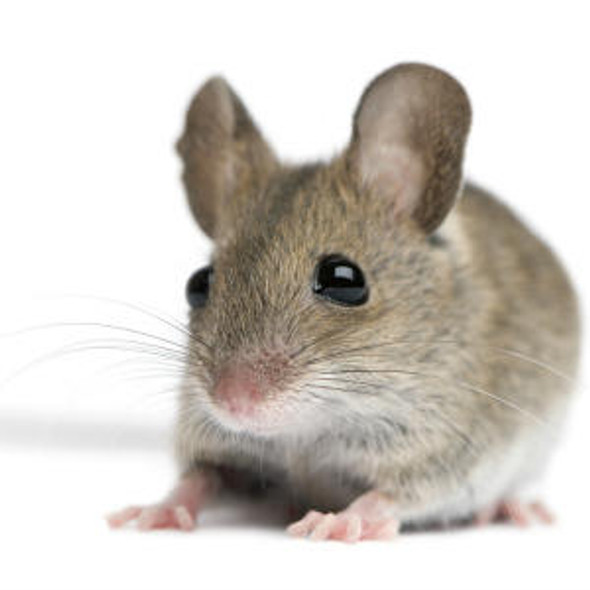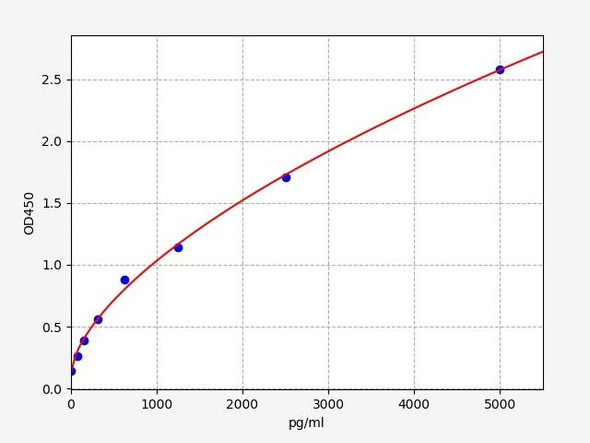Rat HO-1 / HMOX1 / HSP32 ELISA Kit
- SKU:
- RTFI00859
- Product Type:
- ELISA Kit
- Size:
- 96 Assays
- Uniprot:
- P06762
- Sensitivity:
- 0.188ng/ml
- Range:
- 0.313-20ng/ml
- ELISA Type:
- Sandwich ELISA, Double Antibody
- Synonyms:
- HO-1, HO1, HMOX1, HSP32, heat shock protein, 32-kD, heme oxygenase, decycling 1, HO, HO1
- Reactivity:
- Rat
Description

 " target=_blank">데이터시트system_update_alt안전 데이터시트
" target=_blank">데이터시트system_update_alt안전 데이터시트| Product Name: | Rat HO-1 (Heme Oxygenase 1) ELISA Kit |
| Product Code: | RTFI00859 |
| Size: | 96 Assays |
| Target: | Rat HO-1 |
| Alias: | HO-1, HO1, HMOX1, HSP32, heat shock protein, 32-kD, heme oxygenase, decycling 1, HO, HO1 |
| Reactivity: | Rat |
| Detection Method: | Sandwich ELISA, Double Antibody |
| Sensitivity: | 0.188ng/ml |
| Range: | 0.313-20ng/ml |
| Storage: | 4°C for 6 months |
| Note: | For Research Use Only |
| Recovery: | Matrices listed below were spiked with certain level of Rat HO-1 and the recovery rates were calculated by comparing the measured value to the expected amount of Rat HO-1 in samples. | ||||||||||||||||
| |||||||||||||||||
| Linearity: | |||||||||||||||||
| |||||||||||||||||
| Intra-Assay: | CV <8% | ||||||||||||||||
| Inter-Assay: | CV <10% |
| Uniprot: | P06762 |
| UniProt Protein Function: | HMOX1: Heme oxygenase cleaves the heme ring at the alpha methene bridge to form biliverdin. Biliverdin is subsequently converted to bilirubin by biliverdin reductase. Under physiological conditions, the activity of heme oxygenase is highest in the spleen, where senescent erythrocytes are sequestrated and destroyed. Heme oxygenase 1 activity is highly inducible by its substrate heme and by various non-heme substances such as heavy metals, bromobenzene, endotoxin, oxidizing agents and UVA. Expressed at higher levels in renal cancer tissue than in normal tissue. Belongs to the heme oxygenase family. |
| UniProt Protein Details: | Protein type:EC 1.14.99.3; Oxidoreductase; Cofactor and Vitamin Metabolism - porphyrin and chlorophyll Cellular Component: caveola; cytosol; endoplasmic reticulum; endoplasmic reticulum membrane; nucleolus; nucleus; perinuclear region of cytoplasm; plasma membrane Molecular Function:enzyme binding; heme binding; heme oxygenase (decyclizing) activity; metal ion binding; oxidoreductase activity; phospholipase D activity; protein binding; protein homodimerization activity; signal transducer activity Biological Process: angiogenesis; cell death; cellular iron ion homeostasis; cellular response to nutrient; DNA damage response, signal transduction resulting in induction of apoptosis; erythrocyte homeostasis; healing during inflammatory response; heme catabolic process; heme metabolic process; heme oxidation; iron ion homeostasis; negative regulation of cell proliferation; negative regulation of DNA binding; negative regulation of mast cell cytokine production; negative regulation of mast cell degranulation; negative regulation of neuron apoptosis; negative regulation of smooth muscle cell proliferation; negative regulation of transcription factor activity; phospholipid metabolic process; positive regulation of angiogenesis; positive regulation of apoptosis; positive regulation of I-kappaB kinase/NF-kappaB cascade; positive regulation of macroautophagy; positive regulation of smooth muscle cell proliferation; protein homooligomerization; regulation of blood pressure; regulation of transcription factor activity; regulation of transcription from RNA polymerase II promoter in response to oxidative stress; response to estrogen stimulus; response to hydrogen peroxide; response to hypoxia; response to nicotine; response to oxidative stress; small GTPase mediated signal transduction |
| NCBI Summary: | catalyzes the oxidative cleavage of heme to biliverdin [RGD, Feb 2006] |
| UniProt Code: | P06762 |
| NCBI GenInfo Identifier: | 123448 |
| NCBI Gene ID: | 24451 |
| NCBI Accession: | P06762.1 |
| UniProt Secondary Accession: | P06762,Q5BK87, |
| UniProt Related Accession: | P06762 |
| Molecular Weight: | 33,006 Da |
| NCBI Full Name: | Heme oxygenase 1 |
| NCBI Synonym Full Names: | heme oxygenase 1 |
| NCBI Official Symbol: | Hmox1 |
| NCBI Official Synonym Symbols: | Ho1; Heox; Hmox; Ho-1; HEOXG; hsp32 |
| NCBI Protein Information: | heme oxygenase 1 |
| UniProt Protein Name: | Heme oxygenase 1 |
| UniProt Synonym Protein Names: | HSP32 |
| UniProt Gene Name: | Hmox1 |
| UniProt Entry Name: | HMOX1_RAT |
| Step | Procedure |
| 1. | Set standard, test sample and control (zero) wells on the pre-coated plate respectively, and then, record their positions. It is recommended to measure each standard and sample in duplicate. Wash plate 2 times before adding standard, sample and control (zero) wells! |
| 2. | Aliquot 0.1ml standard solutions into the standard wells. |
| 3. | Add 0.1 ml of Sample / Standard dilution buffer into the control (zero) well. |
| 4. | Add 0.1 ml of properly diluted sample ( Human serum, plasma, tissue homogenates and other biological fluids.) into test sample wells. |
| 5. | Seal the plate with a cover and incubate at 37°C for 90 min. |
| 6. | Remove the cover and discard the plate content, clap the plate on the absorbent filter papers or other absorbent material. Do NOT let the wells completely dry at any time. Wash plate X2. |
| 7. | Add 0.1 ml of Biotin- detection antibody working solution into the above wells (standard, test sample & zero wells). Add the solution at the bottom of each well without touching the side wall. |
| 8. | Seal the plate with a cover and incubate at 37°C for 60 min. |
| 9. | Remove the cover, and wash plate 3 times with Wash buffer. Let wash buffer rest in wells for 1 min between each wash. |
| 10. | Add 0.1 ml of SABC working solution into each well, cover the plate and incubate at 37°C for 30 min. |
| 11. | Remove the cover and wash plate 5 times with Wash buffer, and each time let the wash buffer stay in the wells for 1-2 min. |
| 12. | Add 90 µL of TMB substrate into each well, cover the plate and incubate at 37°C in dark within 10-20 min. (Note: This incubation time is for reference use only, the optimal time should be determined by end user.) And the shades of blue can be seen in the first 3-4 wells (with most concentrated standard solutions), the other wells show no obvious color. |
| 13. | Add 50 µL of Stop solution into each well and mix thoroughly. The color changes into yellow immediately. |
| 14. | Read the O.D. absorbance at 450 nm in a microplate reader immediately after adding the stop solution. |
When carrying out an ELISA assay it is important to prepare your samples in order to achieve the best possible results. Below we have a list of procedures for the preparation of samples for different sample types.
| Sample Type | Protocol |
| Serum: | If using serum separator tubes, allow samples to clot for 30 minutes at room temperature. Centrifuge for 10 minutes at 1,000x g. Collect the serum fraction and assay promptly or aliquot and store the samples at -80°C. Avoid multiple freeze-thaw cycles. If serum separator tubes are not being used, allow samples to clotovernight at 2-8°C. Centrifuge for 10 minutes at 1,000x g. Removeserum and assay promptly or aliquot and store the samples at-80°C. Avoid multiple freeze-thaw cycles. |
| Plasma: | Collect plasma using EDTA or heparin as an anti-coagulant. Centrifuge samples at 4°C for 15 mins at 1000 — g within 30 mins of collection. Collect the plasma fraction and assay promptly or aliquot and store the samples at -80°C. Avoid multiple freeze-thaw cycles.Note: Over haemolysed samples are not suitable for use with this kit. |
| Urine & Cerebrospinal Fluid: | Collect the urine (mid-stream) in a sterile container, centrifuge for 20 mins at 2000-3000 rpm. Remove supernatant and assay immediately. If any precipitation is detected, repeat the centrifugation step. A similar protocol can be used for cerebrospinal fluid. |
| Cell Culture Supernatant: | Collect the cell culture media by pipette, followed by centrifugation at 4°C for 20 mins at 1500 rpm. Collect the clear supernatant and assay immediately. |
| Cell Lysates: | Solubilize cells in lysis buffer and allow to sit on ice for 30 minutes. Centrifuge tubes at 14,000 x g for 5 minutes to remove insoluble material. Aliquot the supernatant into a new tube and discard the remaining whole cell extract. Quantify total protein concentration using a total protein assay. Assay immediately or aliquot and store at ≤ -20°C. |
| Tissue Homogenates: | The preparation of tissue homogenates will vary depending upon tissue type. Rinse tissue with 1X PBS to remove excess blood & homogenizein 20ml of 1X PBS (including protease inhibitors) and store overnight at ≤ -20°C. Two freeze-thaw cycles are required to break the cell membranes. To further disrupt the cell membranes you can sonicate the samples. Centrifuge homogenates for 5 mins at 5000xg. Remove the supernatant and assay immediately or aliquot and store at -20°C or-80°C. |
| Tissue Lysates: | Rinse tissue with PBS, cut into 1-2 mm pieces, and homogenize with a tissue homogenizer in PBS. Add an equal volume of RIPA buffer containing protease inhibitors and lyse tissues at room temperature for 30 minutes with gentle agitation. Centrifuge to remove debris. Quantify total protein concentration using a total protein assay. Assay immediately or aliquot and store at ≤ -20 °C. |
| Breast Milk: | Collect milk samples and centrifuge at 10,000 x g for 60 min at 4°C. Aliquot the supernatant and assay. For long term use, store samples at -80°C. Minimize freeze/thaw cycles. |
| Aziz et al. | Cilostazol protects against cyclophosphamide-induced ovarian toxicity in female rats: role of cAMP and HO-1 | Toxicol Mech Methods 7:526-535 (2020) | PubMed: 32456565 |
| Aziz et al. | Fenofibrate ameliorates testicular damage in rats with streptozotocin-induced type 1 diabetes: role of HO-1 and p38 MAPK | Pharmacological Reports 72(6):1645-1656 (2020) | PubMed: 32515004 |
| Waz et al. | Cardioprotective effect of allyl isothiocyanate in a rat model of doxorubicin acute toxicity. | Toxicol Mech Methods. (2021) | PubMed: 34635025 |










